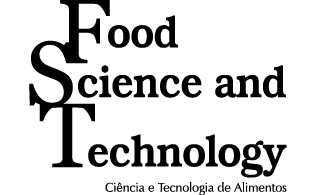Resumo em Inglês:
Abstract Spices play an important role in the formation of stewed meat flavor, and it is necessary to establish a rapid detection technology for flavor in stewed meat production. The aim of this work was to discover the variation of volatiles from Cinnamomum cassia Presl in different processing processes and to establish a real-time detection method during processing. The relative content of volatile components of Cinnamomum cassia Presl from powder to extract and from extract to beef was compared in different processes. The volatile compounds were analyzed by headspace sampling and gas chromatography-mass spectrometry (HS-GC-MS). A total of 20 components were detected in the cinnamon powder. In the marinade processing, the most volatile components was detected in marinade when marinating for 1 hour, such as cinnamic acid(4.39%), cinnamaldehyde (46.57%), anethole(8.05%), α-pinene(7.38%), naphthalene,1,2,4a,5,6,8a-hexahydro-4,7-dimethyl-1-(1-methylethyl)-(0.93%), α-muurolene(8.99%), naphthalene,1,2,3,5,6,8a-hexahydro-4,7-dimethyl-1-(1-methylethyl)-,(1S-cis)-(20.31%), naphthalene,1,2,3,4,4a,7-hexahydro-1,6-dimethyl-4-(1-methylethyl)-(3.03%) and α-calacorene(0.35%). In the bittern processing, the flavor components in the bittern when cooking for 15 minutes were the most and 7 components were detected which were cinnnamic acid(3.69%), cinnamaldehyde(70.67%), anethole(4.37%), α-pinene(1.62%), α-muurolene(3.69%), naphthalene,1,2,3,5,6,8a-hexahydro-4,7-dimethyl-1-(1-methylethyl)-, (1S-cis)-(14.17%) and naphthalene,1,2,3,4,4a,7-hexahydro-1,6-dimethyl-4-(1-methylethyl)-(1.79%). The relative content of the volatile components in two bittern were slightly different. In two processes, only cinnamaldehyde was detected in the stewed beef, where a small amount of α-pinene was detected when marinating for 1 hour and bitterning for 45 minutes. Cinnamaldehyde can be used as the main indicator for the detection of processing. HS-GC-MS can be used as a real-time detection method in the marinade and bittern processing.
